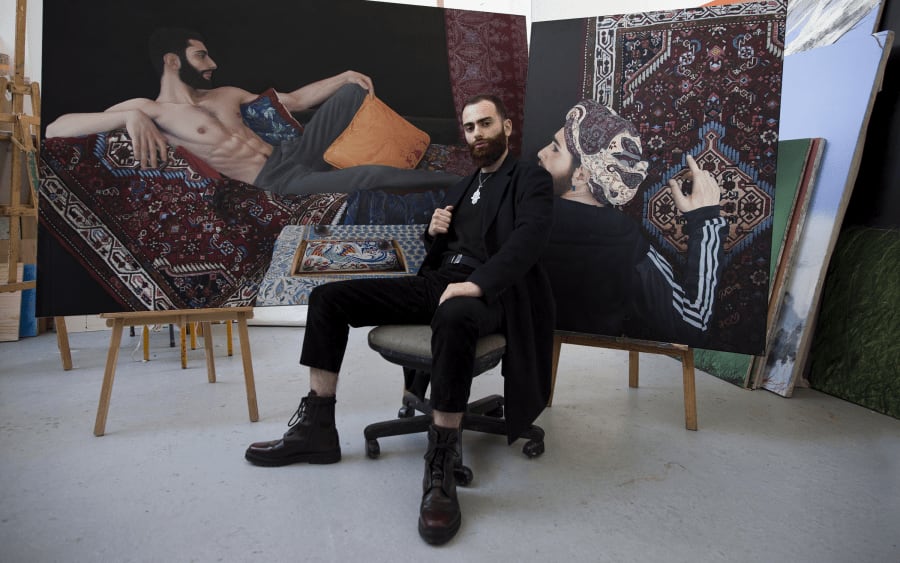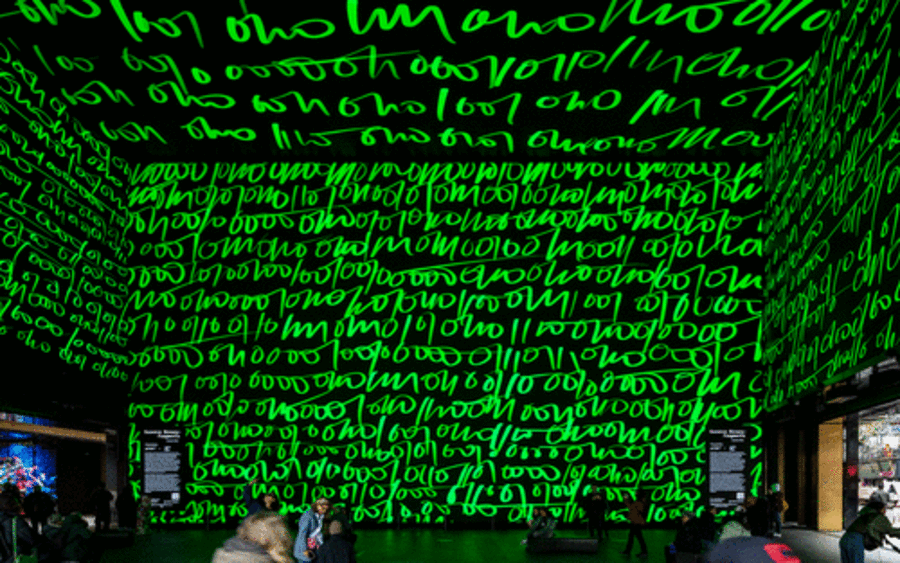Embracing a multiplicity of positions and perspectives, Ho Tzu Nyen says he is known among his friends and collaborators as an ‘and’ rather than ‘either/or’ person. Elaborating on the title of his touring survey exhibition of works from the past decades, ‘Time & the Tiger’, he explains: ‘I’m drawn to all kinds of conjunctions, not only those indicating possible relationships, but also virtual connections, superpositions, contradictions, and paradoxes.’
Unsurprisingly, a celebration of fluidity – not just of personal identity, but national and regional constructs based on the vicissitudes of history and politics – is a hallmark of Ho’s oeuvre, which spans video, photography, and sculpture. Fittingly, the institutions presenting ‘Time & the Tiger’ – which launched at Singapore Art Museum in November 2023, opens at Art Sonje Center in Seoul and Hessel Museum of Art in New York this summer, and moves to Mudam in Luxembourg in 2025 – have been given free rein to tweak the show. ‘I like the idea of a show that continuously transforms itself,’ Ho says. ‘At which point may we consider it to be a different show altogether?’
One of the great themes that define Ho’s practice is the construct of Southeast Asia, a region comprising the nation-states of Brunei, Myanmar, Cambodia, Timor-Leste, Indonesia, Laos, Malaysia, the Philippines, Singapore, Thailand, and Vietnam. Among his most well-known projects is The Critical Dictionary of Southeast Asia (CDOSEA) (2017-), which was prompted by the question: ‘What makes Southeast Asia a unified region when it has never been bound by a single religion, language or political system?’ Of course, there is no singular answer, and Ho embraces that complexity with a non-exhaustive A-Z glossary of terms, from ‘A for altitude, anarchism’ to ‘Z for zone, zoomorphism.’ Corresponding to each of these terms is a collection of texts, images, video clips, and sounds relating to the cultures and histories of Southeast Asia, which viewers can access via the project’s website, cdosea.org. In exhibitions, the work is presented on a large video screen, with visuals programmed via an algorithm that generates random sequences out of this database, resulting in a protean, dynamic, and ever-changing experience.
CDOSEA has been a generative vehicle for Ho, who has created letter-specific spin-offs that delve more deeply into various themes. These include the two-channel video installation One or Several Tigers (2017), a duet between a computer-generated Malayan tiger and a surveyor working for the British colonial administration in Singapore, based on the concepts explored in the letters ‘T for Tiger/Theodolite’ and ‘W for Weretiger.’
Another pair of works showcase Ho’s penchant for inventing fictional vessels to explore Southeast Asia’s Cold War histories. The Name (2015-2017) derives from ‘G for Ghost(writers)’ and Gene Z. Hanrahan, a shadowy author and editor of several books, including The Communist Struggle in Malaya (1954), suspected to have been a front for the CIA. It includes a selection of books allegedly written by Hanrahan, as well as a video about him with contradictory voiceovers in English and Chinese. The Nameless (2015) is based on ‘L for Lai Teck,’ an enigmatic figure who became the general secretary of the Malayan Communist Party from 1939 to 1947, but was also known as a triple agent working for the French, British, and Japanese secret police. The video compiles clips from various films featuring the Hong Kong actor Tony Leung Chiu Wai, who has often been cast in the role of a spy. These cinematic narratives, now divorced from their original contexts, are woven with Ho’s subtitles that tell Lai Teck’s story, creating a slippery film with layers of hearsay, conspiracy, and subterfuge that collapses fact and fiction.
Ho’s practice is resolutely malleable, as demonstrated in the recurring subject of the tiger, which appears in works that propose imaginative and emancipatory ways of thinking about the past. Ho compares the tiger to ‘Schrödinger’s cat before the lid is opened, existing in a paradoxical state of simultaneously being dead or alive,’ which ‘preserves the very concept of possibility itself, and the yearning to escape the reduction into a single timeline.’
In other tiger works, such as the heavy metal concert The Song of the Brokenhearted Tiger (2012), the theater performance Ten Thousand Tigers (2014), and the video 2 to 3 Tigers (2015), Ho plumbs the richness of associations and representations that tigers have in Southeast Asia. In the Malay world, tigers are seen as liminal, shapeshifting figures who go between human and animal worlds, and are sometimes viewed as mediums for ancestral spirits. To Ho, tigers, which were hunted to extinction by the British administration in Malaya, also represent mysterious, disruptive, and inexorable forces in history that return under different guises. The ruthless Japanese general and war criminal Tomoyuki Yamashita, who led the Japanese campaign against the British in Singapore in World War II, was referred to as the ‘Tiger of Malaya.’
Recently, Ho has begun to question something more fundamentally existential: the linear flow of time. His latest work, the video installation T for Time (2024), is described by the artist as ‘a collection of temporalities that are different in scales and in natures.’ Among the animated video’s many meditations are an account of the origins of Greenwich Mean Time; timekeeping traditions in the East and West; as well as how time is explained by quantum physics and cosmology.
Thrown into the mix are images of protests and incarceration, which Ho describes as ‘critical forms of time,’ that reference political struggles across Asia, and more idiosyncratic and personal vignettes. These include family photographs and home movies from the 1990s of Ho’s Japanese friend Tomoyuki Arai, which Ho describes as strangely familiar as someone who grew up in Singapore during the same period. There is also an anecdote about P.K. Chan, the 79-year-old caretaker who has tended to Victoria Theatre’s clock, Singapore largest public clock, for over 30 years, and happens to be the manager of the building where Ho’s studio is situated. ‘I followed him up the clock tower one day, and he adjusted the clock by checking it against the time on his mobile phone,’ Ho recalls. ‘For me, this story, so rich in its manifold multiplicities of time, became as monumental as the notion of gravity curving space-time and hence slowing down time...’
Looking to the future, Ho is mulling over a new work inspired by an encounter with the poems of Rainer Maria Rilke. ‘Somehow, this led to my reading of Ralph Waldo Emerson and to my current curiosity – not about Transcendentalism, but about the philosophy and the history of self-help,’ he says. ‘I am not sure if this will develop into anything, but somehow not knowing is the most exciting and fun part.’
‘Ho Tzu Nyen: Time & the Tiger’ is on view at Art Sonje Center, Seoul from June 4 to August 4, 2024; Hessel Museum of Art, New York from June 22 to December 1, 2024; and Mudam, Luxembourg from February 7 to August 31, 2025.
Ho Tzu Nyen is represented by Kiang Malingue.
Adeline Chia is an arts writer and editor based in Singapore.
Caption for top-image: Portrait of Ho Tzu Nyen. Courtesy of Singapore Art Museum.
Published on June 3, 2024.


